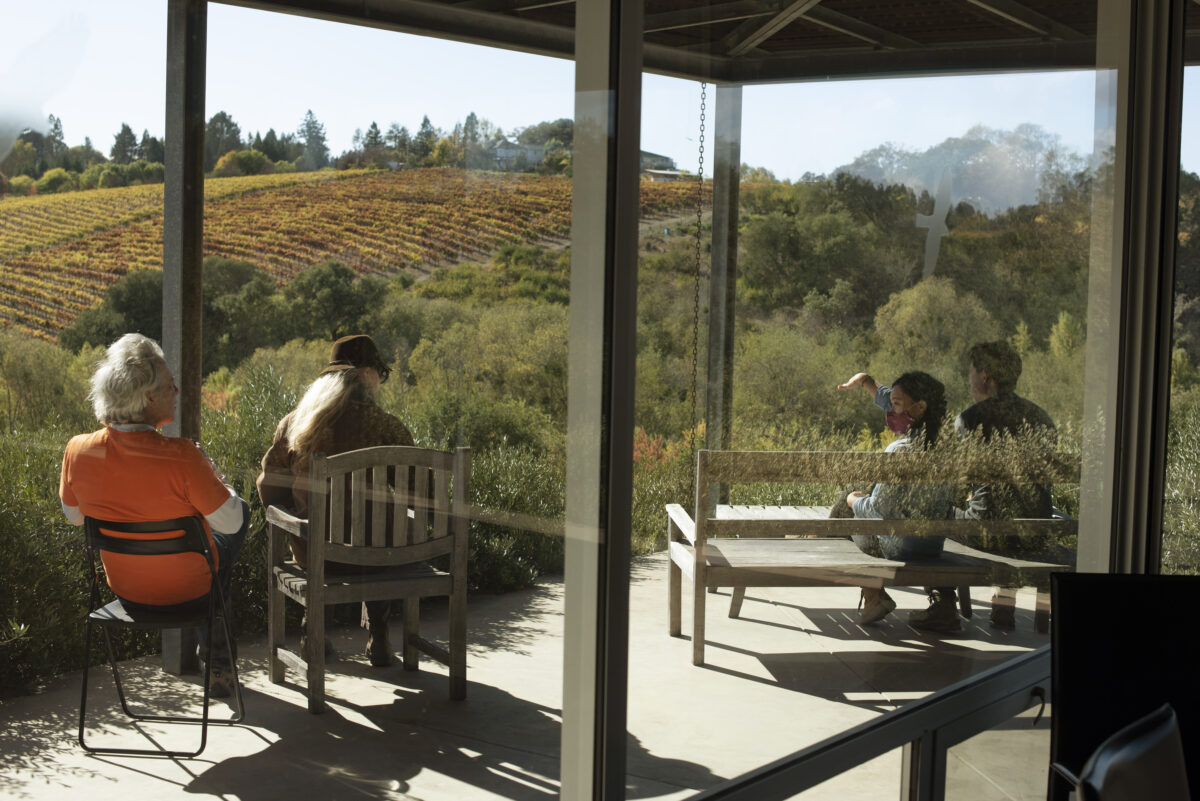Olive oil is never better, never more compelling, than it is at the moment it first streams into the world, straight from the press. It is the purest expression of the olive, an elixir that delights with field-fresh flavors and a texture best described as both lean and rich.
This is olio nuovo, the new oil.
Olio nuovo is a treasure of early winter in Sonoma. It cannot be separated from its season and cannot be preserved, as its bold flavors begin to fade not long after pressing. The decline is subtle at first, but within a month or two, the new oil loses its unique spark and begins to mellow. By early spring, it will be a memory until the next vintage.
“When olive oil comes out of the funnel during pressing, there is always a feeling of renewal and exuberance. The vibrant green and gold hues, the fresh aromas, and the healthy vegetative and fruity flavors are intoxicating, full of the strength and health of the trees, only an hour removed,” says Brooke Hazen, who oversees 70 acres of olive trees at his Gold Ridge Organic Farms in the rolling hills southeast of Sebastopol.
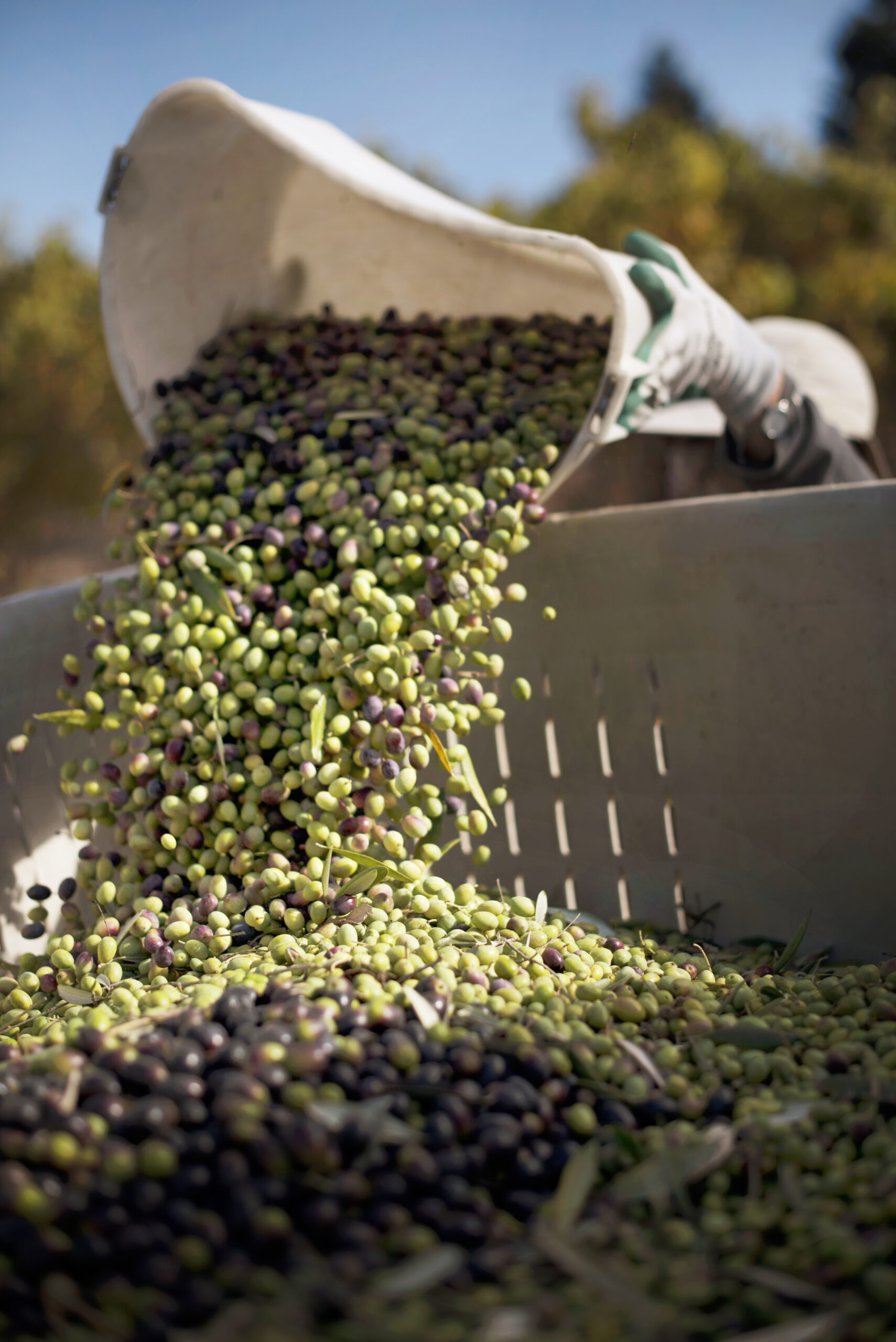
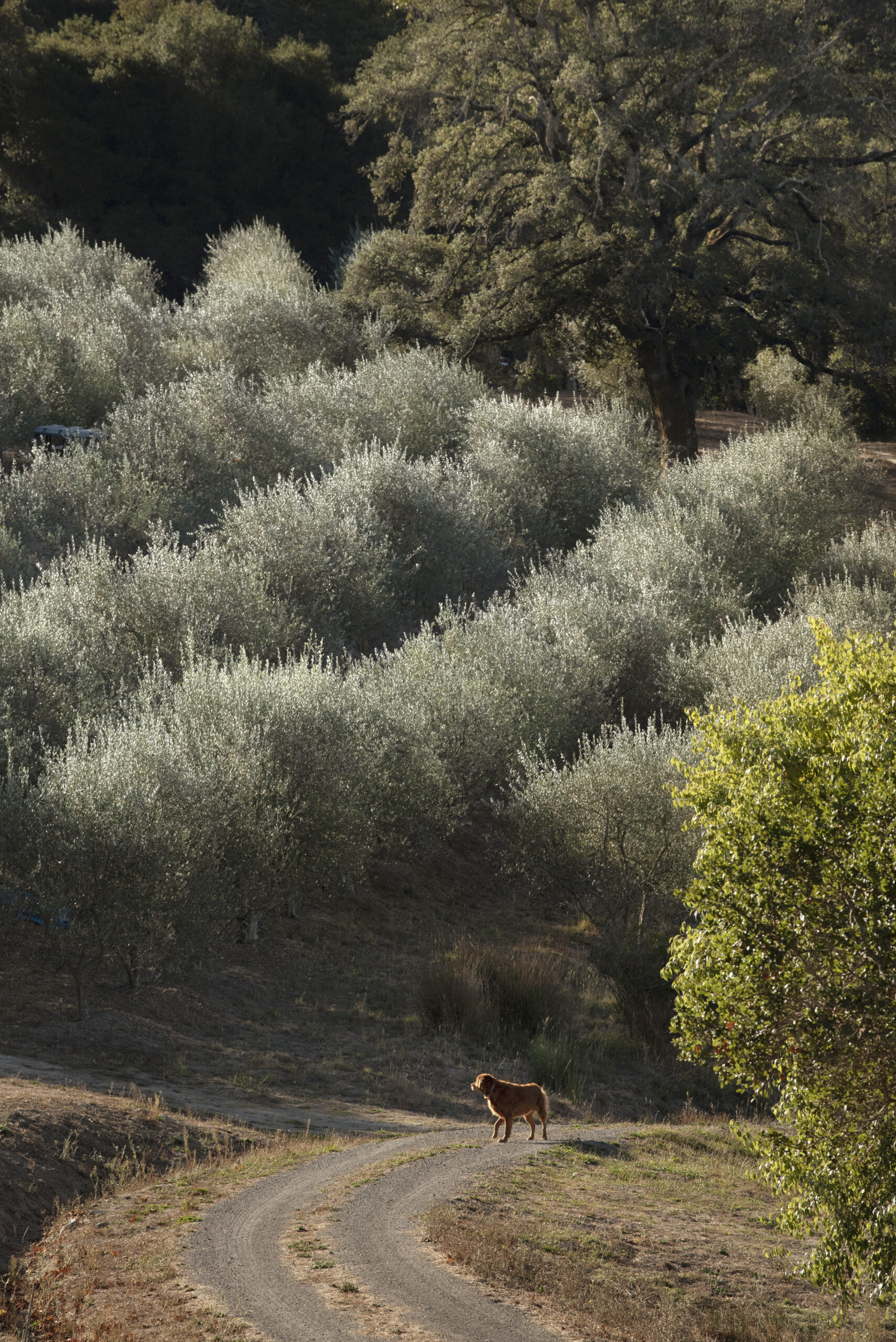
Typically, quality olive oil rests in bulk for a few months after being pressed, a process that allows it to settle and become shelf-stable. Olio nuovo, in contrast, is bottled and released straight from the press, skipping the step during which the oil rests, allowing fresh, peppery, straight-from-the-tree flavors to shine. Until quite recently, only a handful of local growers, including Healdsburg’s DaVero and Petaluma’s McEvoy Ranch, celebrated a separate release of the new oil before the more widely available extra virgin olive oil came to market.
Sonoma County’s olive harvest begins around the time the grape harvest concludes, typically in late October or early November, and continues for several weeks. By the winter holidays, prized bottles of olio nuovo are available locally, many of them from small-scale, family-owned farms and olive mills. These days, there’s recognition that Sonoma County-grown olio nuovo holds its own alongside prized oils from Tuscany such as Ardoino, a favorite of olive oil pioneer Ridgely Evers at DaVero, and Poggio Lamentano, the favorite of renowned food writer M. F. K. Fisher.
“There is al ways a feeling of renewal and exuberance. The vibrant green and gold hues, the fresh aromas…full of the strength and health of the trees, only an hour removed.” ~ Brooke Hazen
Producer Stephen Singer of Baker Lane Vineyards likens olio nuovo to the elusive white truffle, another early-winter treasure. “The early vivid expression of olive oil doesn’t last long, nor does the flavor of the truffle,” he says. “Both are transitory, deeply seasonal, momentary, and ephemeral.” Singer, the former wine director at Chez Panisse in Berkeley, used to be in the business of importing premium olive oil from Tuscany. Now, settled in the hills outside Sebastopol, he makes wine and produces estate olive oil.
Growers say that to understand olio nuovo, it is essential to understand olive oil itself. The characteristic flavors of an olive’s oil are determined almost entirely by which type of olive tree the olive grows upon (over 2,000 types of trees exist). The trees must be properly tended and pruned, and farmers must choose the right moment to pick. The olives must be harvested gently, without stems and leaves, then transported as quickly as possible to the mill, before they begin to ferment. It is the job of the miller to press the oil out of the olive as gently as possible. Nearly all premium oils are made with olives processed and pressed within 24 hours of being harvested.
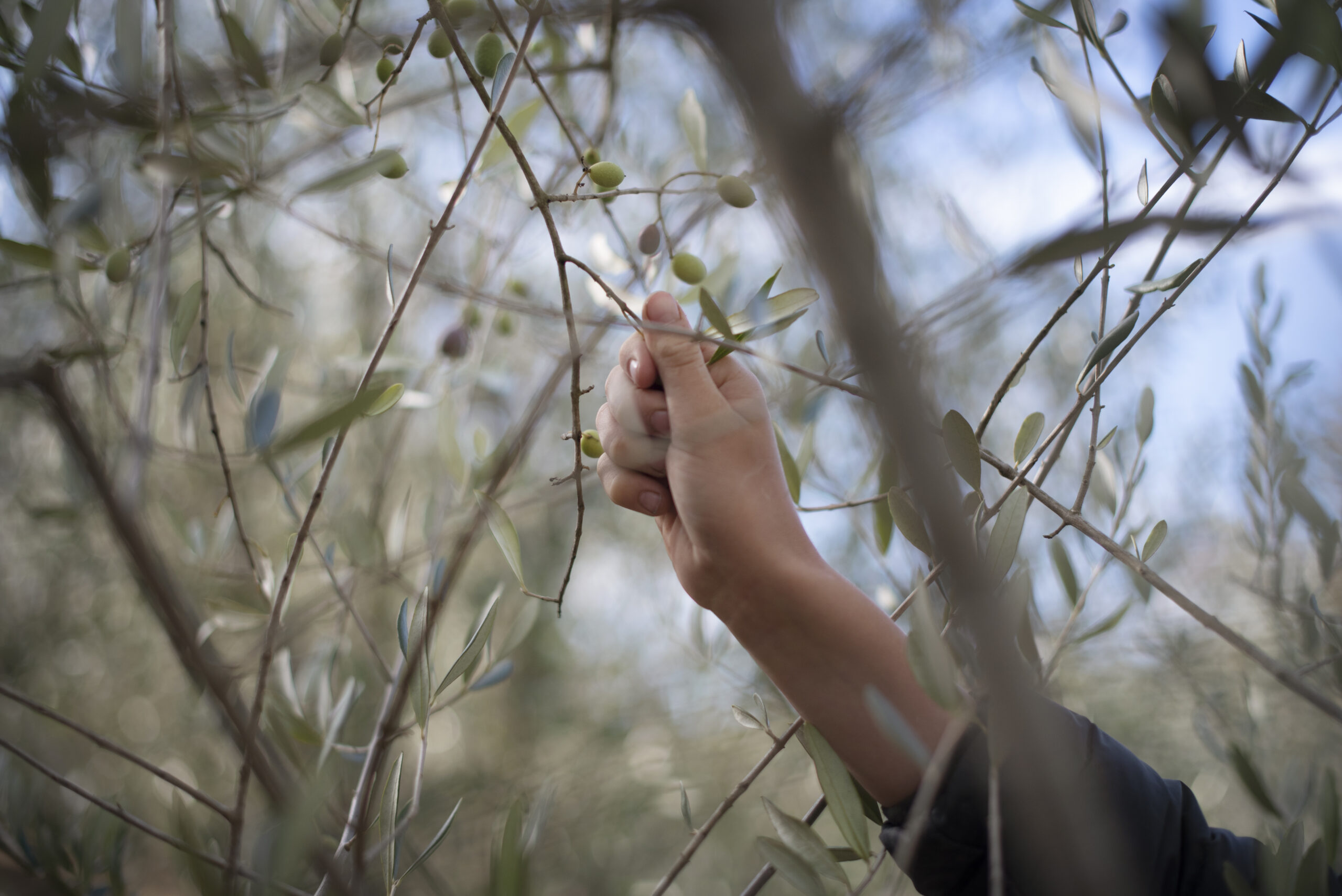
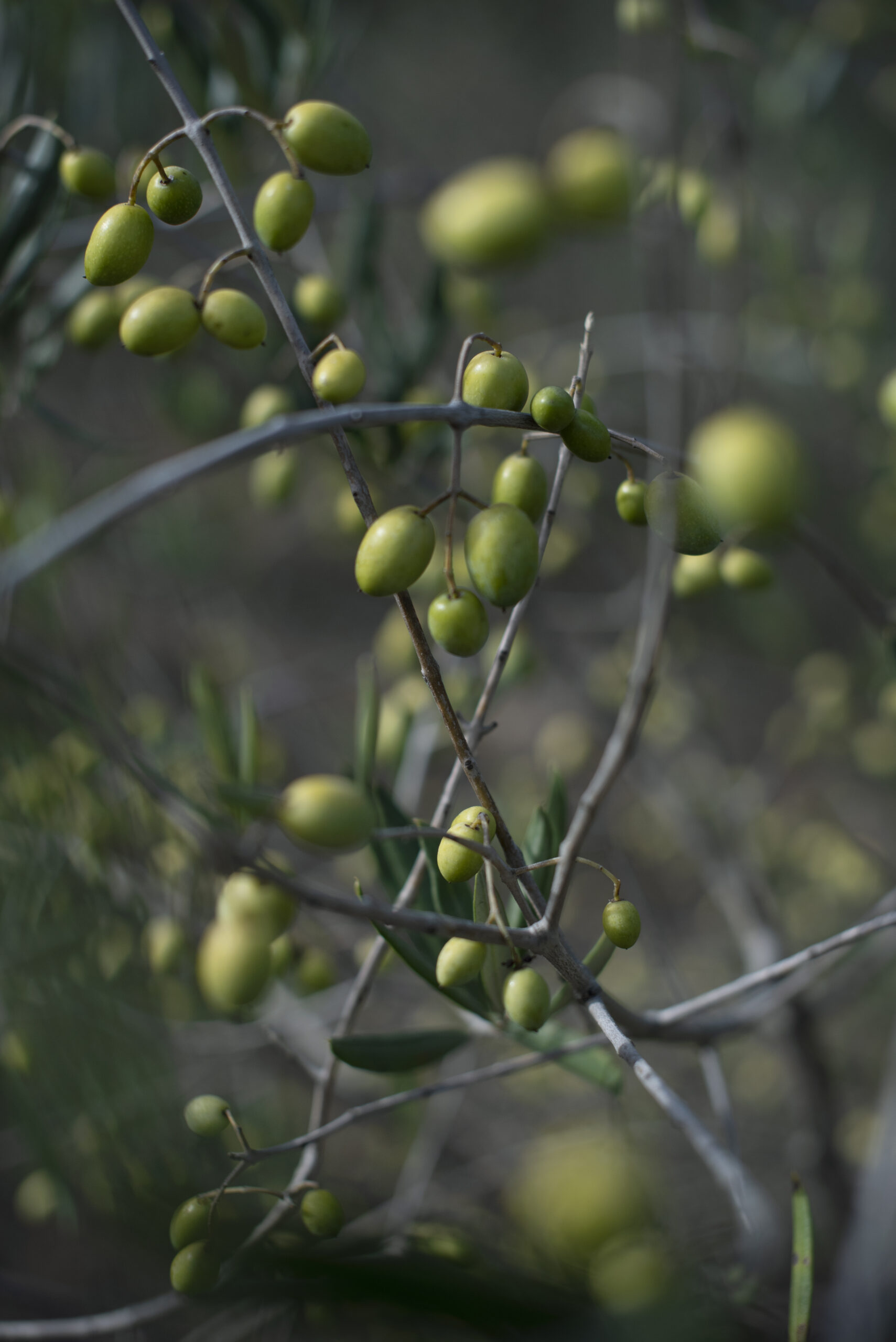
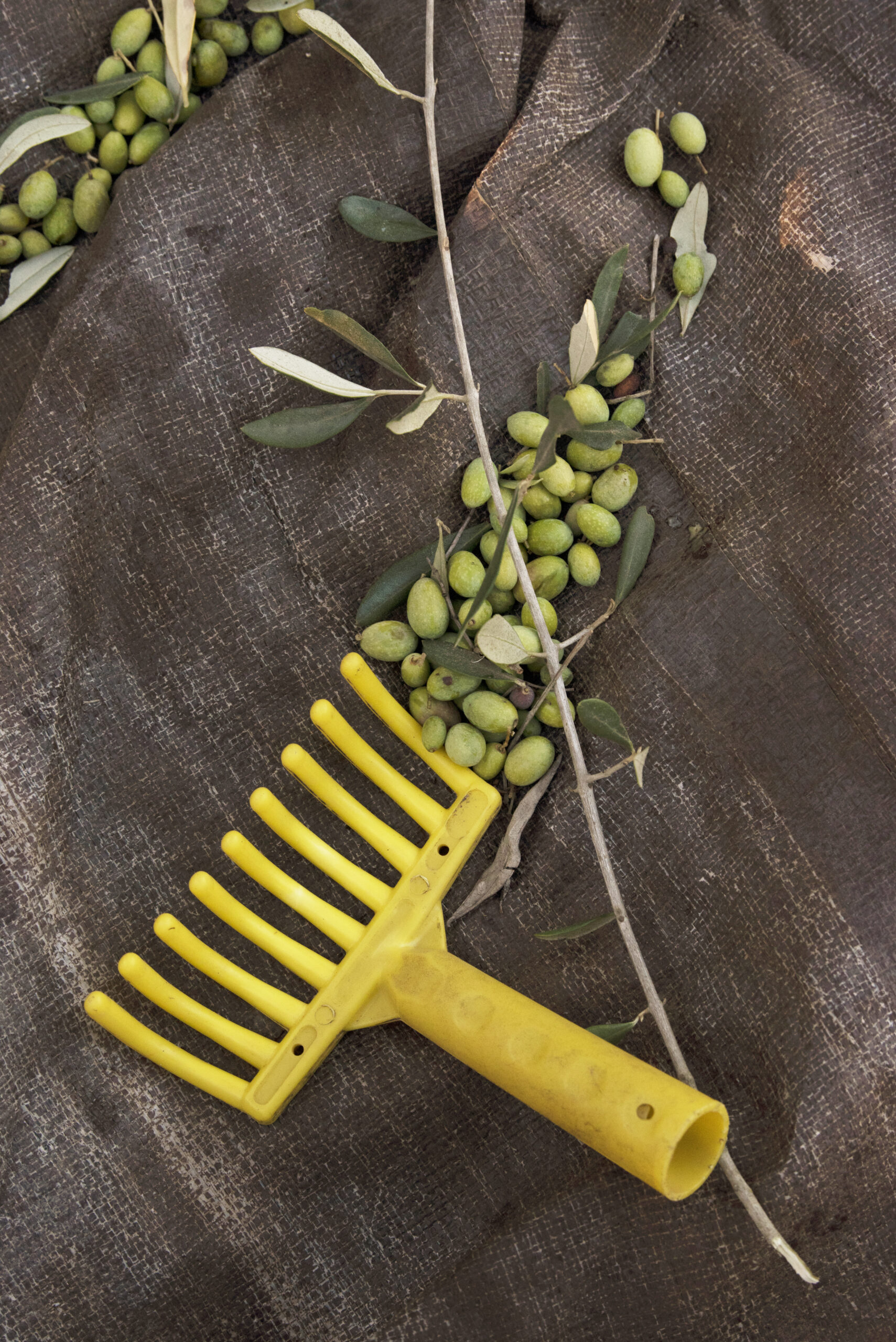
The best olive oils are made with a mix of green fruit and ripe fruit. Green fruit has the bitterness and peppery qualities considered essential; when olives ripen to purple-black, as they all eventually do, their oil takes on more buttery characteristics. The mix of both green and purple olives at different stages of ripeness creates the complexity of flavor that makes olive oil lovers wax poetic.
Six local mills serve the olive growers of Sonoma County. Recently, these mills have also become home to a new seasonal tradition: the community milling day. At one of these events, typically held in November or early December, anyone with an olive tree or two can be part of the magic of olio nuovo. Small-scale growers and backyard hobbyists bring their freshly-picked fruit—in buckets, bags, and bins—to the mill on the day of the press. After checking the olives for pests and for ripeness, the miller adds the fruit to the press to become part of a community blend. This is grassroots local food production at its best: Each grower gets back containers of the fresh-pressed oil in proportion to what they contributed. The more olives you bring, the more oil you receive.
Standing in the orchard, watching as olives are gently tugged from their slender stems, it all comes full circle—the care put into tending the trees, the flurry of harvest day, the quick rush to the press. After an hour or two of picking, you can smell on your hands the subtle aroma of the olive and the oil within— all peppery and grassy, the sunlight and rain together. “Olive oil is priceless,” says Ridgely Evers. “And it is sacred.”
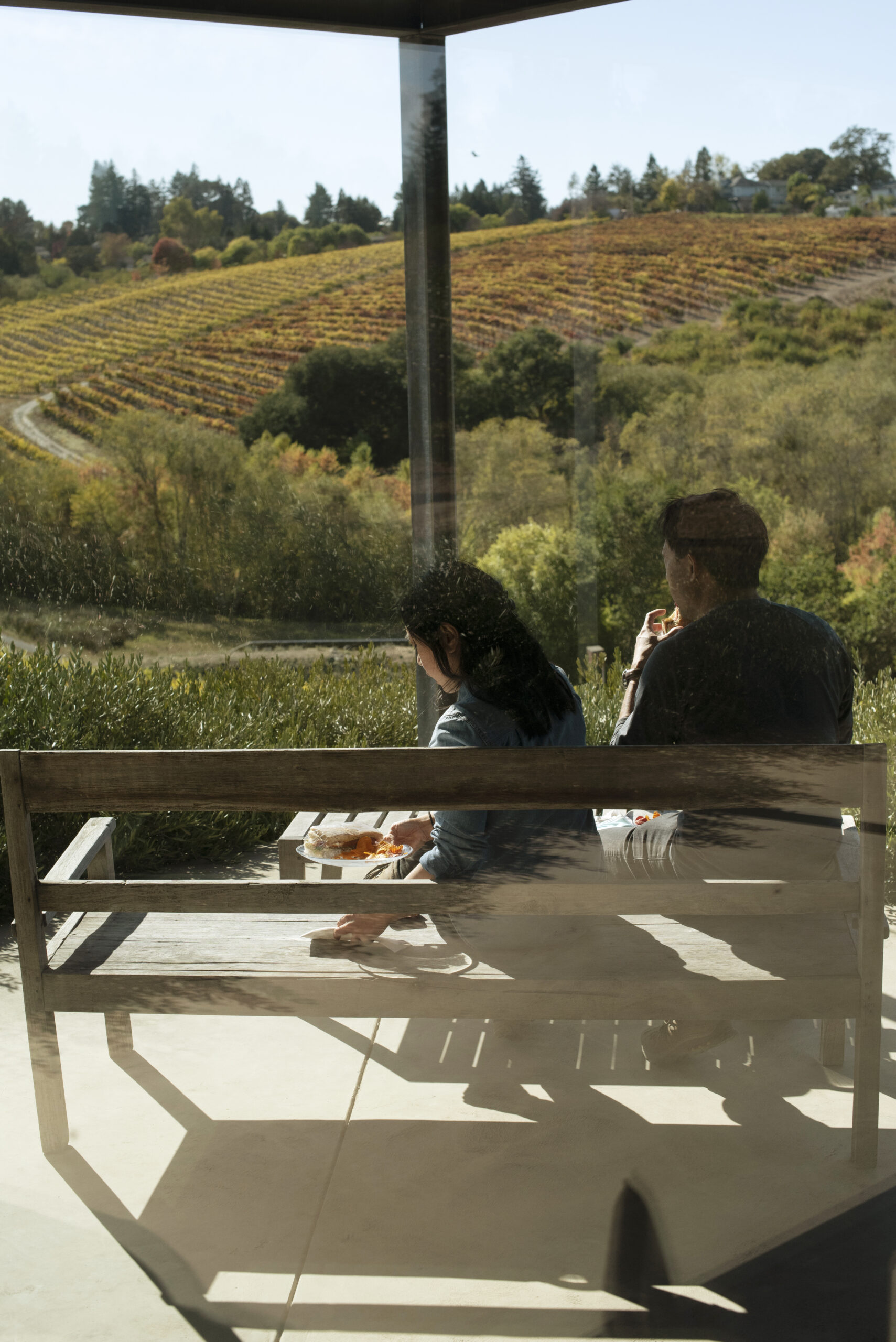
Tasting Sonoma’s Olio Nuovo
There are nearly a dozen commercial olio nuovo producers in Sonoma County, plus hundreds of backyard growers who either do a custom milling for oil to share with friends and neighbors, or who bring their olives to community milling events.
Baker Lane Vineyards: Stephen Singer’s 2021 Occidental Blend is not labeled “olio nuovo,” but is available soon enough after pressing that it is a de facto nuovo, with vivid flavors of artichoke, new mown hay, and green apple. Online sales only. bakerlanevineyards.com
DaVero Farms & Winery: The benchmark estate olio nuovo is sassy and elegant, with complex bitter and pepper flavors—the signature liquid nirvana. It is available by appointment at the tasting room and online, from Thanksgiving through the end of the year. 766 Westside Rd., Healdsburg. 707431-8000, davero.com
Dry Creek Olive Company: A blend of olives from 100-year-old trees and newly-planted cultivars goes into a bright, herbaceous olio nuovo, available shortly after pressing and prior to the release of estate’s signature flavored olive oils. 7878 Dry Creek Rd., Geyserville. 707-431-7200, trattorefarms.com
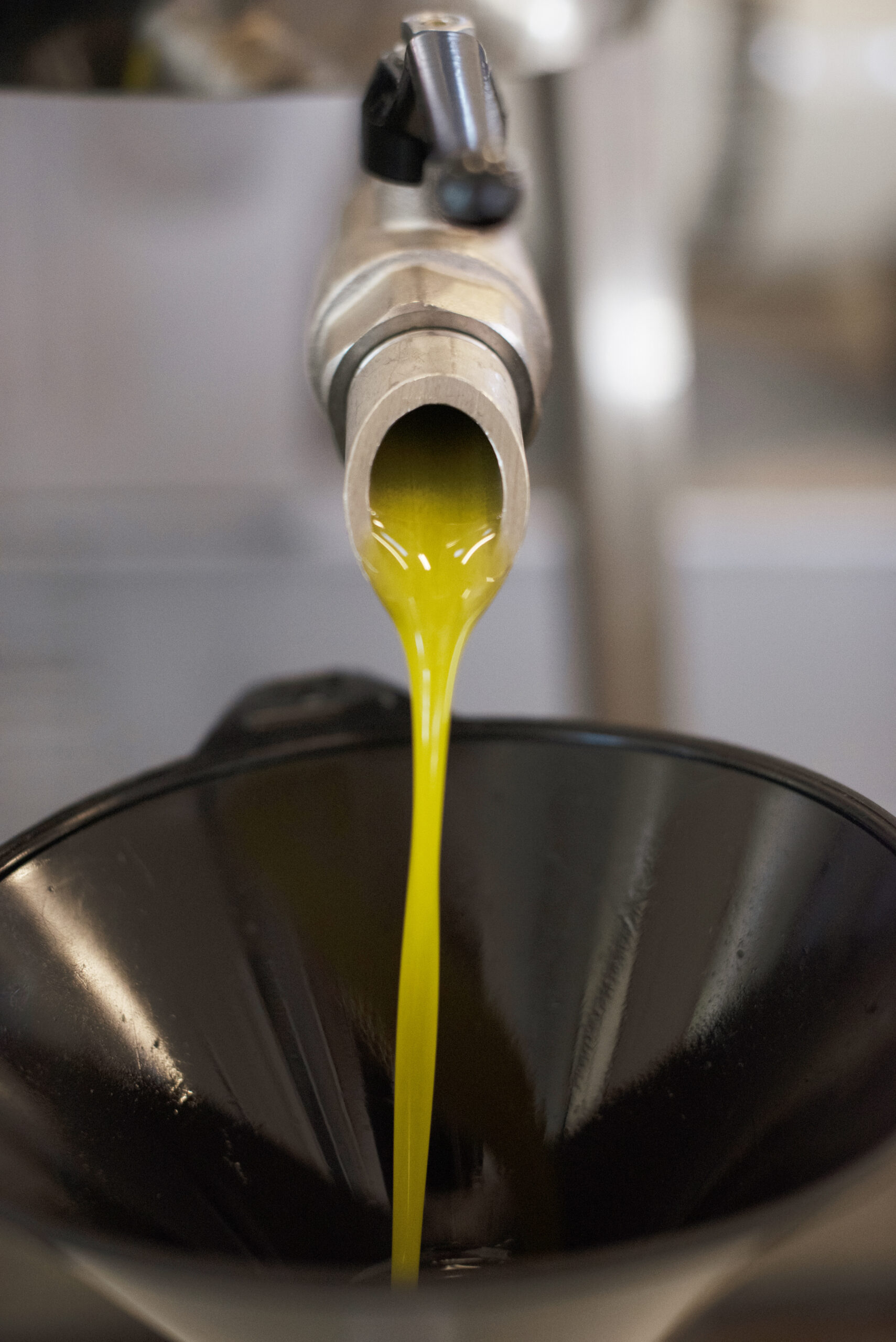
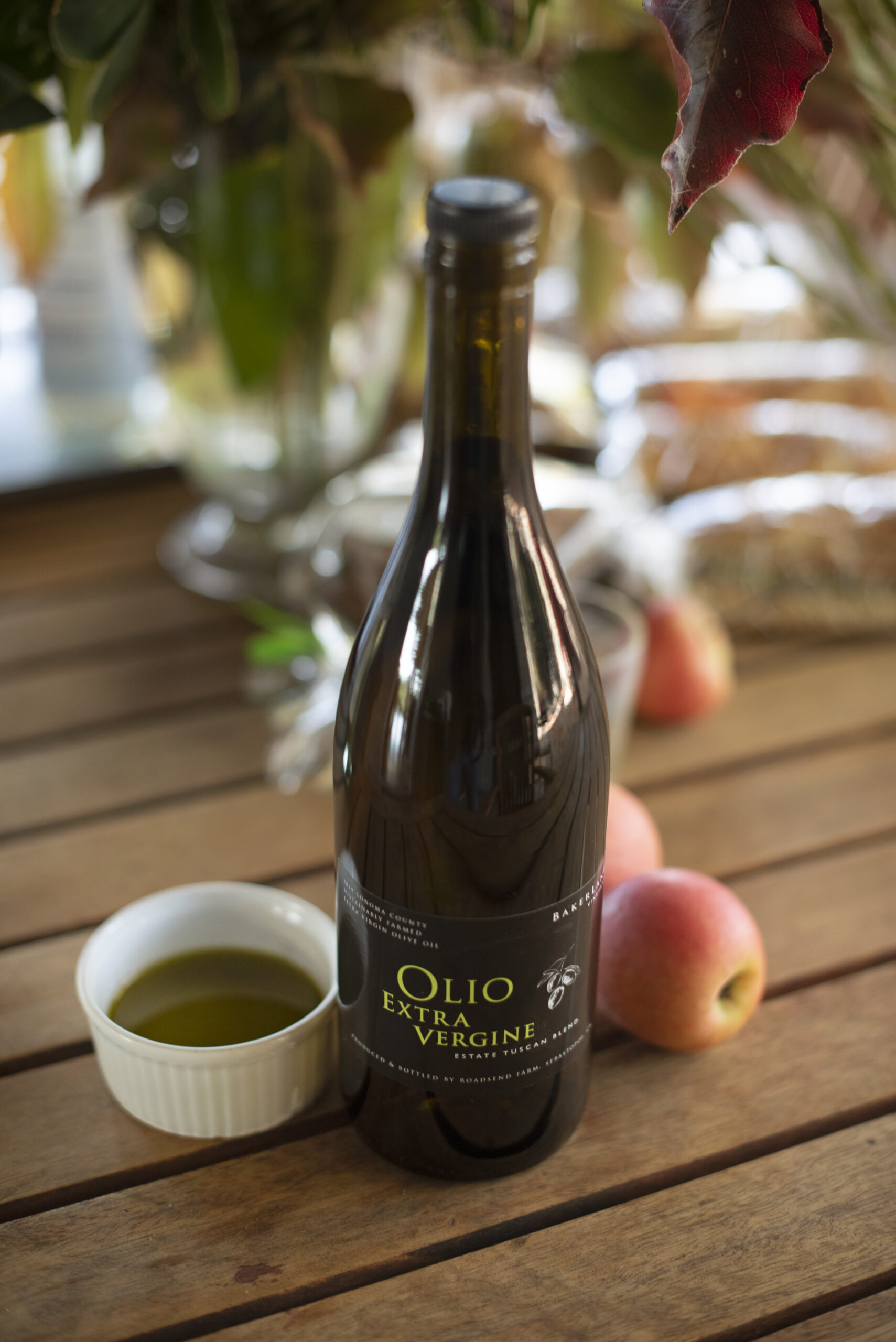
Eyrie Olive Oil: This delicious Tuscan-style olio nuovo is available on Saturdays at the Santa Rosa Original Certified Farmers Market, 50 Mark West Springs Rd., and at Lazzini’s Market, 3449 Bennett Valley Rd., Santa Rosa. Email suzanne@eyrieoliveoil.com for information.
Figone Olive Oil Company: The group releases an olio nuovo blend of Spanish and Italian varieties. 483 First St. West, Sonoma. 707-282-9092, figoneoliveoil.com
Gold Ridge Organic Farms: Brooke Hazen offers four olio nuovos, each made from a different variety of olive, including Picholine, Minerva, Tuscan, and Arbequina. The varieties ripen in succession, not simultaneously, and all are picked a bit later in the season, producing oils with a voluptuous buttery texture. The olio nuovos are released in late December and available through February. 3387 Canfield Rd., Sebastopol. 707-8233110, goldridgeorganicfarms.com
McEvoy Ranch: This olio nuovo evokes the subtle flavors of winter greens – think cardoons, chicories, and dandelions – with a trail of peppery heat, a signature quality of the estate’s seven Tuscan cultivars. Available at the ranch store and online. 5935 Red Hill Rd., Petaluma. 707-7782307, mcevoyranch.com
Monte-Bellaria di California: Proprietor Bill MacElroy typically harvests his olives on the last Sunday of October. His olive oil is available within about 24 hours of pressing, and though it is not labeled as olio nuovo, that’s what it is. 3518 Bloomfield Rd., Sebastopol. 707829-2645, monte-bellaria.com
Olivino: Their olio nuovo is a blend of five Tuscan cultivars from a 2,500-tree orchard that straddles the border of Sonoma and Mendocino counties. It shows classic flavors of fresh grass, fruit, nuts, and pepper. It is released near Christmas and available until Easter. 14160 Mountain Home Rd., Hopland. 707744-1114, olivino.com
Preston Farm & Winery: Chaste Maiden Early Release Organic Olive Oil is a blend of ten Italian and Spanish cultivars. Even in its youth, it is a delicate oil, with a modicum of the peppery heat that defines many other oils. As it ages, the oil softens even more, and develops buttery characteristics, making it ideal for anyone who balks at “two cough” olive oils, as some people call robust olio nuovos. 9282 West Dry Creek Rd., Healdsburg, 707-433-3372, prestonfarmandwinery.com
The Olive Press: Their olio nuovo is made from the Spanish cultivar Arbequina, which has suggestions of newly-mown grass, artichoke, apple, and banana. 24724 Arnold Dr., Sonoma, 800-9654839, theolivepress.com
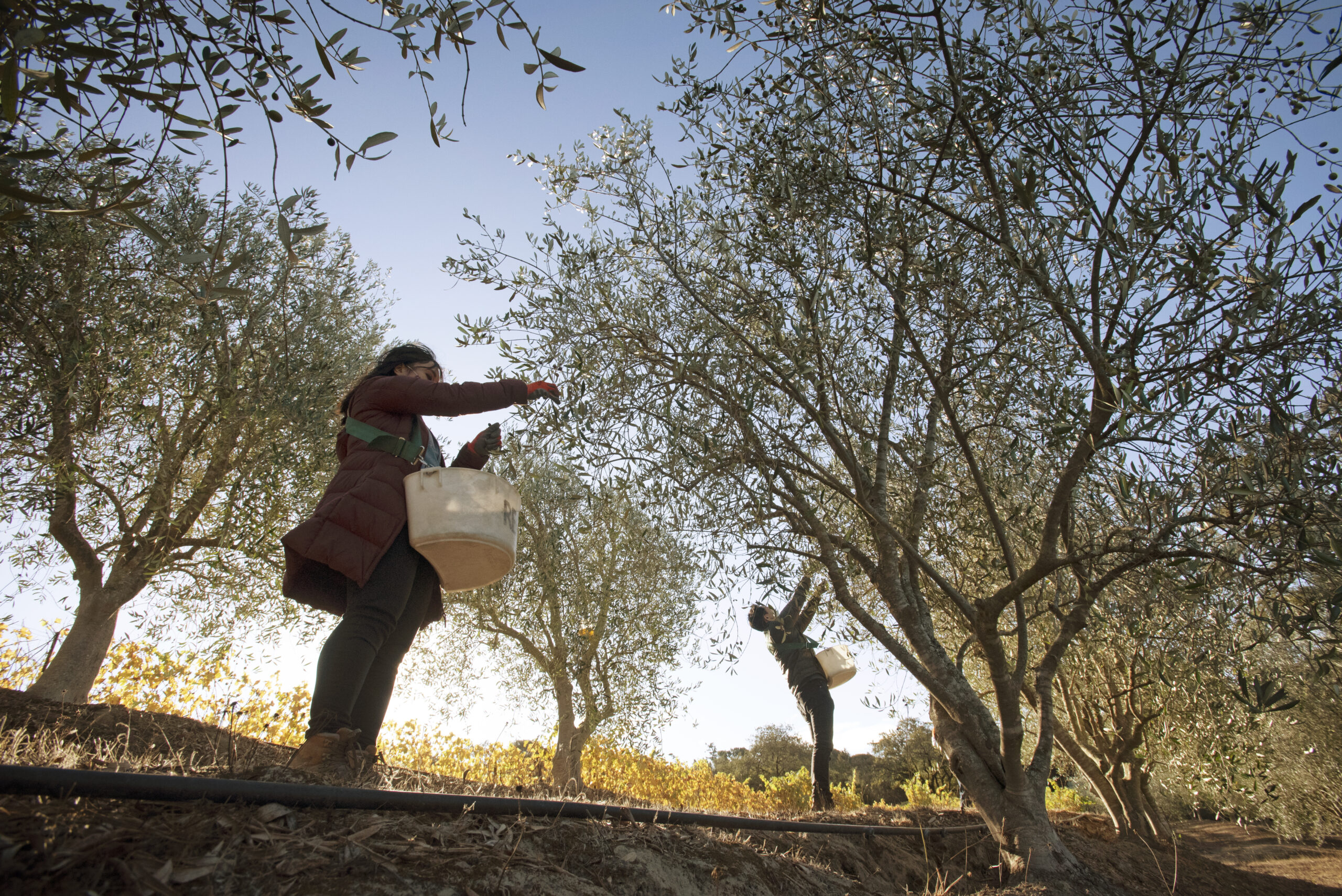
Community Milling Days
Community milling days are a special way to participate in the feel and flavors of olive oil production. Some mills require a minimum quantity, while others will take even just a hatful of olives. The mills will generally ask for a specific mix of ripeness in the olives and that participants pick their olives within 24 hours of the event.
They’ll also inspect the olives for signs of damage from the olive fruit fly. For additional information and requirements, please contact each mill directly.
Dry Creek Olive Company, Geyserville: Oct. 31, Nov. 21, Dec. 5. 5 pound minimum, $1 per pound. 707-431-7200, trattorefarms.com
Figone’s Olive Oil Co.: Saturdays and Sundays, Oct. 9-Dec. 12. 5 pound minimum, $1.12 per pound. 707-244-9148, figoneoliveoil.com
McEvoy Ranch, Petaluma: Nov. 14; register by Nov. 10. $1 per pound. 707-778-2307, mcevoyranch.com
Olivino, Hopland: Call for information. 707-744-1114, olivino.com
The Olive Press, Sonoma: Nov. 7 and Nov. 21. 800-965-4839, theolivepress.com










